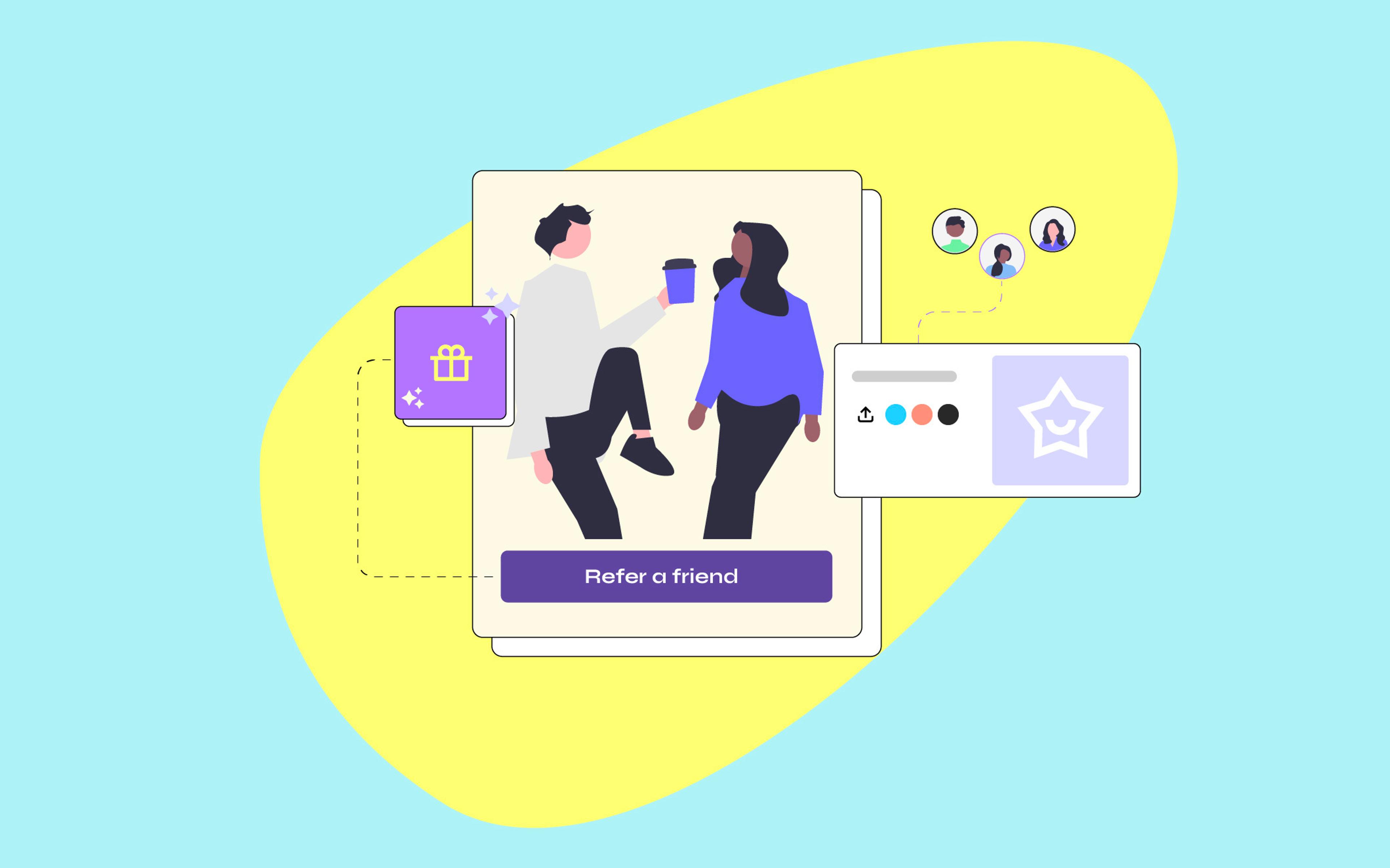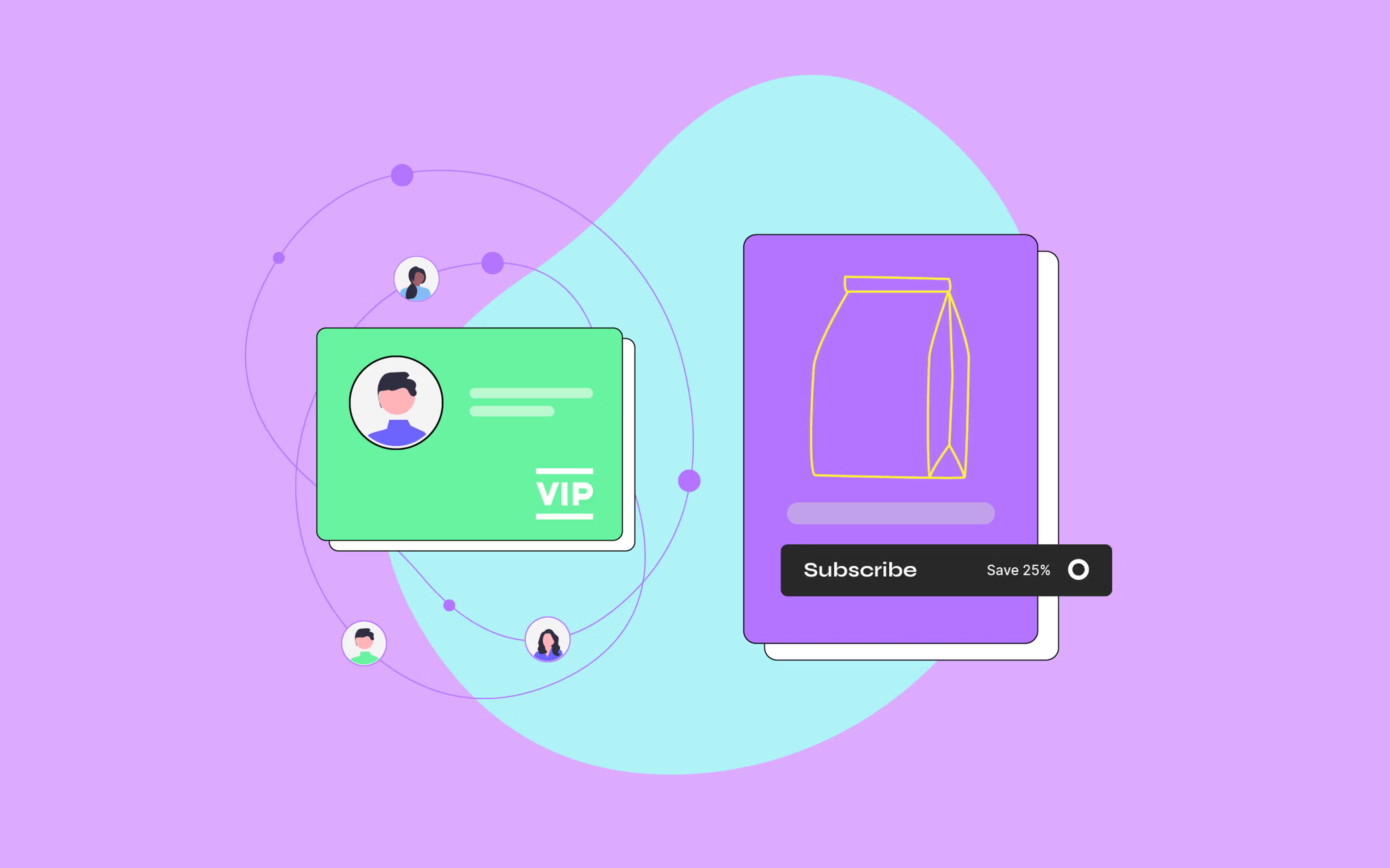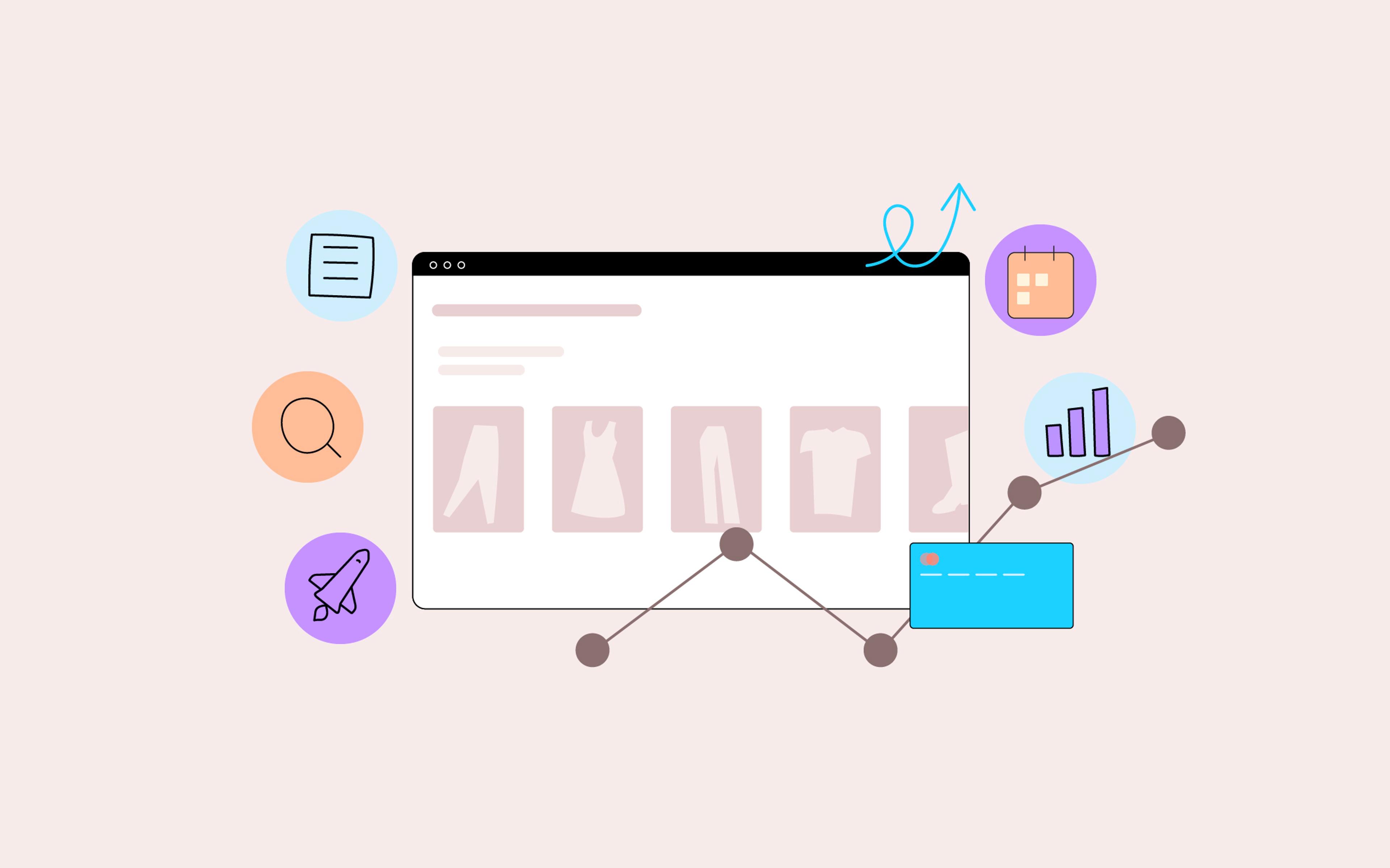In the last few years, customer acquisition has become more challenging and expensive for direct-to-consumer (DTC) brands due to App Tracking Transparency, increased competition, and inflationary pressure. With Chrome deprecating third-party cookies in late 2024/early 2025 and the resulting “signal loss,” marketers expect campaign performance to take another hit, driving Customer Acquisition Cost (CAC) further up.
As a result, e-commerce executives have been paying increased attention to customer retention strategies. Existing customers are cheaper to re-engage, have a higher average order value, and can drive organic acquisition through referrals, UGC and word of mouth.
In our conversations with clients, Customer Relationship Management (CRM) strategies have been top-of-mind, and new or revamped loyalty programs are among the main projects that brands are putting on the roadmap for the next year–often coupled with more intentional zero-party/first-party data strategy and better personalization capabilities.
However, not all loyalty programs are created equal: different growth stages, categories, and business models call for different program designs. The loyalty ecosystem has become increasingly complex to navigate, with a deluge of tools and tactics that brands can tap into. While this leads to more flexibility and healthier competition, even expert practitioners are often at a loss when they want to launch a new program or when they need to understand the performance and pitfalls of their existing one.
In this article, we’d like to cover the e-commerce loyalty programs through a first-principles approach. We’ll look at how to pick a program structure, how to design the “earn” side and the “burn” side of your program to maximize ROI–based on factors such as your geography, target demographic, product category, and business model–and how to measure the effectiveness of your program.
Let’s dive right in!
How to Structure Your Loyalty Program
The number one mistake we see brands making when rolling out their loyalty program is not being intentional enough when it comes to program structure. Instead, they just do the first thing that comes to mind, copy popular competitors or other brands they admire, or mindlessly adopt the functionality of whatever loyalty app they have decided to install (which, in turn, is often dictated by the app’s popularity).
Unfortunately, loyalty programs are extremely nuanced. The ideal program depends on factors such as geography, target demographic, product category, business model, internal capabilities, and several other elements that, taken together, make certain structures and rewards more effective than others.
If you don’t account for all these elements, you will end up with a program that’s underperforming at best and detrimental at worst. Think about a luxury fashion brand that releases a discount-based loyalty program: customers wouldn’t simply be uninterested, but some might actively resent the brand for putting forward a cheap, transactional program that is not consistent with your brand’s image.
In fact, we find that consistency, rather than uniqueness, is the primary trait of successful loyalty programs. Good programs are consistent with the needs of both the brand and its consumers–at all times and across all touchpoints. You don’t need to be cleverer than everyone else; you just need to consistently make your customers happy in ways that will ultimately benefit the brand. If you can align these two needs, you’re halfway there.
As you can imagine, that’s easier said than done. In reality, most brands are pulled in a million different directions, and a compromise is often needed to find the ideal structure.
In the following paragraphs, we’ll outline a streamlined, repeatable process that you can follow to design the foundational aspects of your loyalty program.
1. Pick a Loyalty Program Type
The very first step is to pick the structure of your loyalty program.
You’ll find a lot of conflicting and confusing information on the web about the different possible types of loyalty programs–most resources are trying to one-up each other by adding one more variation to a never-ending list of program structures.
Let’s simplify this. In our experience, all loyalty programs fall into one of two categories:
- Balance-based programs. In a balance-based program, customers are awarded points when they perform specific actions (e.g., spending with the brand) or at key moments (e.g., on their birthday). They can then spend those points to redeem rewards such as discounts or free products. This is similar to having a bank account where you accumulate money and then spend it.
- Tier-based programs. Tier-based programs are similar to transactional programs in that you design a way to “quantify” how loyal customers are. However, rather than the customer “spending” their loyalty, the customer is assigned a loyalty tier (which can be permanent or not). Based on the customer’s tier, they are then granted different perks, such as free shipping or early product access.
Everything else (gamified programs, paid memberships, value-based programs, etc.) is a variation of the above. For instance, a paid membership is just a tiered loyalty program where your tier is determined by a digital subscription plan: you pay the brand every month just to have access to the perks of that specific tier.
Neither type of program is superior to the other. Whether to go with a balance-based program or a tier-based program is primarily a function of your brand’s positioning, price point, and consumer demographic:
- Balance-based programs are better for brands selling to a price-sensitive audience that worries about value for money and responds better to more tangible rewards. These customers are likely already subscribed to similar programs, e.g., at their grocery store, making the model more familiar.
- Tier-based programs, on the other hand, are a better fit for a more affluent type of consumer who worries about status more than about convenience. The aura of exclusivity associated with being on the upper tiers of a brand’s loyalty program is a perfect match for such a demographic.
Another factor to take into account has to do with the nature of the rewards you expect to give your customers: some rewards (such as freebies) are supposed to be one-offs, which makes them a better fit for a balance-based program, while others (such as free shipping) are better modeled as “permanent” rewards, which makes them a better fit for a tier-based program.
If you can’t decide, you should know that it’s not uncommon to see hybrid programs: Most airlines, for instance, have loyalty programs where consumers accumulate rewards as they travel with the airline. Certain perks (e.g., priority boarding) are unlocked through a tier-based mechanism, while others (e.g., free trips) are unlocked through a balanced-based mechanism.
However, as we’ll see later, simplicity and ease of use are key elements that determine the success of a loyalty program, so you should only take this approach as a last resort, especially if you’re launching a brand-new program.
2. Model the “Earn” Side of Your Program
Once you’ve chosen the foundational structure of your loyalty program, it’s time to determine how your customers will earn their rewards. At Nebulab, we typically refer to these as triggers because they trigger your customers to carry out certain behaviors.
When designing a trigger, there are only two elements you need to think about:
- What is the action you want customers to take?
- How are you going to reward customers for that action?
They might seem like trivial questions, but they’re really not. Think about it this way: a loyalty program is an investment. You’re giving away value (in the form of discounts, freebies, services, etc.) in exchange for a specific return. If you get your triggers wrong, you might fail to drive action or drive the wrong action, which means you’re giving away your loyalty program perks in exchange for nothing.
While most brands start by rewarding customers for spending more, you don’t have to stop there. Here are a few additional ideas that might be relevant:
- Acquire zero-party data. If you need more information about your customers, how about asking them? You can use your loyalty program to collect data about a customer’s preferences, habits, and attitudes and then activate it as part of your personalization strategy or product manufacturing process.
- Encourage event attendance. If you host virtual or IRL events, you can encourage attendance by rewarding attendees through your loyalty program. (Note: Exclusive event access also makes for a very appealing loyalty perk, so this goes both ways!)
- Collect user-generated content (UGC). Are you struggling to collect UGC for your brand, or do you need some organic content for a new product launch? You can reward customers for posting content on social media and allowing you to reuse it across your digital properties.
- Promote referrals. For obvious reasons, referrals and loyalty go hand-in-hand. If you want to drive more referrals, you can use your loyalty program to encourage customers to tell their friends about your brand. Bonus: Make it an even better deal by also rewarding the referee, not just the referrer!
These are very generic examples that will apply to most brands. However, as we’ve already said, the sky’s the limit: find ways to activate your loyalty program that make sense for your brand, and keep in mind that the “right” triggers will change over time.
When working with brands, we encourage them to treat their loyalty program as a blank canvas that they’re constantly drawing on. At any given time, you should be able to draw a straight line from your current goals and challenges to your loyalty program’s structure: How does your program drive behavior that helps your business reach the next level?
3. Model the “Burn” Side of Your Program
Once you’ve established how customers will advance in your loyalty program, you need to determine what perks you’ll offer.
A common mistake at this stage is copying what everyone else does and offering discounts without thinking about what your customers really want.
Typically, we bucket loyalty program perks into four categories:
- Exclusivity. These perks include exclusive/early access to products, content, or events. They are typically a good fit for premium brands with an established “brand universe” (i.e., digital and physical IP) that they can expand, remix, and leverage as part of their loyalty program.
- Cash. These are more tangible monetary perks such as discounts, cashback, freebies, free shipping, and other forms of value add. They are typically a good fit for value-driven brands, where consumers are more price-sensitive and want to know they’re getting the most bang for their buck.
- Services. Think personal shoppers, pet grooming, and other services you can bundle with your product to create a holistic brand experience. They are a good fit for product categories that are service-adjacent (such as pets), require constant education (such as apparel/beauty), or both.
- Community. Exclusive communities are becoming increasingly popular, allowing customers to retreat from the open web into a “safe space.” These communities can double down as invaluable sources of UGC and customer feedback, creating a powerful loop.
It’s worth spending a few words on discounts, which are extremely common in loyalty programs. While discounts are easy to implement and seem like a safe bet, they are not necessarily the right choice for all brands. Discounting has several problems:
- It’s expensive. While this ultimately depends on your profit and operating model, discounting products year-round can severely impact your bottom line.
- It scales poorly. With most of the perks we have described, you can access economies of scale. That’s not the case with discounting: no matter your size, a 10% discount will always mean giving away 10% of revenue.
- It hurts your brand. Discounting lowers the perceived value of your product and can easily backfire, especially if your brand has a premium positioning.
So, how do you decide which perks to offer? It’s pretty simple, actually: you just ask!
Talk to 10-20 of your most loyal customers, i.e., those who will realistically reach the upper echelons of your loyalty program. You’ll want to ask them about their lifestyle, how your brand fits into their day-to-day, what other brands they shop with, and what they would value in your loyalty program. This should give you a comprehensive overview of what perks will resonate the most.
A final note: if your brand sells in different channels (e.g., online and in your physical stores), design your perks to appeal to customers no matter their shopping channel. For instance, a free shipping perk doesn’t make sense to someone who typically shops in-store, but having access to a personal stylist once a year is much more enticing.
Optimizing Your Loyalty Program CX
When we talk about Customer Experience (CX), we refer to how customers will interact with your loyalty program. Making your program as simple as possible to understand and consume is one of the main factors determining its success.
On that note, here are a few suggestions for creating an amazing loyalty program CX:
- Unify the experience. By funneling as many of your CRM operations as possible through your loyalty program, you will streamline the customer experience, maximize enrollment rates, and reduce operational overhead for your team. This can go as far as enrolling any customer with a registered account into your loyalty program.
- Keep it simple. At the same time, you want to avoid overcomplicating things: if customers get confused, they might stop engaging with the program. Provide clear instructions for earning and consuming rewards, and keep reminding customers of the existence and structure of your program across different touchpoints (e.g., via email, SMS, at checkout, etc.).
- Leverage personalization. Loyalty program personalization is a somewhat sophisticated but compelling technique. Some perks resonate more than others: if you can identify which customers are most likely to appreciate them, you can effectively maximize customer engagement.
Remember that if you’re using a third-party app to power your loyalty program, your ability to customize the CX might be somewhat limited. This isn’t a bad thing per se, but it is something you’ll want to account for when picking your ideal partner. You also shouldn’t be scared of deploying a little bit of custom technology, if it helps you stand out from the crowd and create a loyalty program that your customers will love you for.
Measuring Loyalty Program Effectiveness
Launching your program is only half the battle. As we’ve mentioned, a good loyalty program is like a blank canvas: you should constantly adjust it to drive the behavior you want at that moment in time. To do that effectively, you need to measure the success of your program.
What KPIs to measure ultimately depends on your program's structure, perks, and rewards. At a minimum, you’ll want to look at the following:
- Enrollment Rate: % of unique customers who enrolled in your program
- Engagement Rate: % of unique customers that engaged with your program in any capacity (e.g., looking at their balance)
- Redemption Rate: % of unique customers that used a perk from your program
- AOV, LTV, and Time-Bound Retention: you’re already measuring these for your regular customers. For your loyalty members, you want to measure the program’s incrementality with respect to these KPIs–more on that below.
- Program Costs: you should have a clear picture of both variable costs (discounts, freebies, events, etc.) and fixed costs (IT, training, etc.).
Finally, don’t forget about customer feedback! Ideally, you should constantly seek qualitative and quantitative feedback from your customers in the form of NPS surveys and moderated/unmoderated interviews to improve the program.
A Note on Self-Selection and Program Incrementality
Unfortunately, the literature on measuring loyalty program effectiveness can be extremely poor, when not misleading. Most resources will point you to metrics such as Customer Lifetime Value (CLTV) and leave it at that. Some will tell you to compare metrics between members and non-members, which is awfully incorrect.
When it comes to loyalty programs, what you want to measure is their incrementality, i.e., to what extent the loyalty program actually affects your KPIs. If you do that, you’ll find that the incrementality of any loyalty program is much lower than what you’d see if you just computed the performance delta between members and non-members.
For example, let’s assume you want to measure how much your loyalty program contributes to increasing Average Order Value (AOV). You look at the AOV of customers enrolled in your program and find that it is, on average, $25 higher than for non-members. You might be tempted to conclude that your loyalty program leads to a $25 increase in AOV, but you would be wrong–very much wrong.
Think about it this way: many of your loyalty program’s members would have spent the exact same amount (or perhaps just a little less) with your brand, even if the loyalty program was not there to begin with. These customers are not spending more because they’re subscribed to your loyalty program; instead, they have subscribed to your loyalty program because they were spending more in the first place. This statistical mistake is called self-selection bias, and it’s unfortunately very common among inexperienced practitioners.
To properly compute program incrementality, you need to rely on techniques such as difference-in-differences analysis, where you measure a metric before and after customers join your program, and Propensity Score Matching (PSM), where you “cluster” customers by affinity and compare their behavior. Unfortunately, it would take an entire article to unpack these techniques, so we encourage you to do additional research.
Loyalty Programs Are Powerful, but They Require Attention
As you’ve seen, launching a loyalty program for your brand is not an initiative you can treat as an afterthought. It requires careful planning, spotless execution, and continuous, data-informed iteration to maximize your ROI. Otherwise, you might end up with a loyalty program that’s more expensive than the incremental revenue it generates.
In this article, we’ve only scratched the surface, but there’s so much more: depending on the structure of your program, you’ll need to think about tier pricing or point expiration; interviewing customers is an art in and of itself, as is measuring program incrementality. All of these topics would warrant separate articles.
If you need help launching your program or overhauling your existing one, feel free to reach out! Together, we can create a program that will grow your business while delighting your customers.



